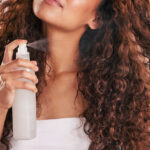Beware the beauty trap: Are your hair products secretly poisoning you?
 (NaturalHealth365) Have you ever taken a close look at the ingredients listed on your hair care products? Dare to look at the small print on those labels, and you’ll find a multitude of harmful chemicals.
(NaturalHealth365) Have you ever taken a close look at the ingredients listed on your hair care products? Dare to look at the small print on those labels, and you’ll find a multitude of harmful chemicals.
A recent study reveals that styling oils, sprays, and creams harbor VOCs – volatile organic compounds – aimed at enhancing smoothness and shine. Be in the know about what you’re applying to your locks, as this revelation sheds light on the potential impact of these unnoticed ingredients on your overall well-being.
Toxic VOCs are damaging to the human body and also compromise indoor air
The Purdue University study linked above proves hair care products with toxic VOCs change the composition of indoor air. Cyclic volatile methyl siloxanes (cVMS) are commonly found in hair care products. Researchers are highly concerned about cVMS emissions from these products due to the potential negative effects of siloxanes on the environment and human health.
To understand the extent of cVMS emissions and exposures during the use of hair styling products, researchers conducted practical hair care experiments in a residential building. Siloxane-based products were tested using common hair styling techniques, such as straightening, curling, waving, and oiling. The concentration of volatile organic compounds (VOCs) was measured using proton-transfer-reaction time-of-flight mass spectrometry.
Though previous studies analyzed how harmful siloxanes are released from products used for personal care, the majority of those analyses were primarily focused on products such as cleansers that wash off the body. The study is making waves as it is the first to examine the alterations to indoor air quality caused by hair care product VOCs.
Harmful VOCs linger in spaces where hair products are used
The mass spectrometry readings revealed significant emissions of VOCs from hair care products available on shelves in stores throughout the country.
The VOC emission levels were shaped by a wide array of factors, including:
- The specific styling tool used
- The type of hair care product
- The temperature of the tool used for activation
It is interesting to note that hair styling tools used at high temperatures and the styling of long hair elevated VOC emission levels all the more. The most important finding of the study is the estimation that the daily inhalation of the VOC dubbed “cVMS,” also referred to as D5, has the potential to hit a dangerous 20 milligrams per day.
Tips for reducing exposure to hair product chemicals
If your bathroom is like most, it probably has at least one chemical-laden hair product or styling tool.
But fear not! If you are not ready to make the switch to an all-natural hair care routine, you can enjoy your favorite hair products and tools while minimizing some of the risks. Ensure proper ventilation by running an exhaust fan during and after your hair care routine. Alternatively, open a window to let fresh air in. Or, as an added measure of safety, purify your indoor air with this kind of air purification system.
Now, if you’re in the market for creative, safe, and budget-friendly natural hair styling alternatives that won’t subject your hair to harmful chemicals, consider these DIY recipes:
Floral hair perfume:
- Mix distilled water with a few drops of your favorite essential oil (lavender, rose, or chamomile).
- Pour the mixture into a spray bottle and mist it over your hair for a natural fragrance.
Sugar spray for texture:
- Dissolve a tablespoon of sugar in a cup of warm water.
- Allow it to cool, then transfer it to a spray bottle.
- Spritz on damp hair for a textured, beachy look.
Aloe vera gel styling:
- Combine aloe vera gel with a few drops of jojoba oil.
- Mix well and apply sparingly to style and add shine.
DIY sea salt spray:
- Mix one cup of warm water with a tablespoon of sea salt.
- Add a teaspoon of coconut oil and a few drops of your preferred essential oil.
- Spritz on damp hair for a natural, beach-inspired texture.
These DIY styling alternatives not only give you the look you desire but also contribute to the health of your hair. So, style away with confidence, using these natural recipes to enhance your hair’s beauty without the worry of harmful chemicals.
Sources for this article include:



